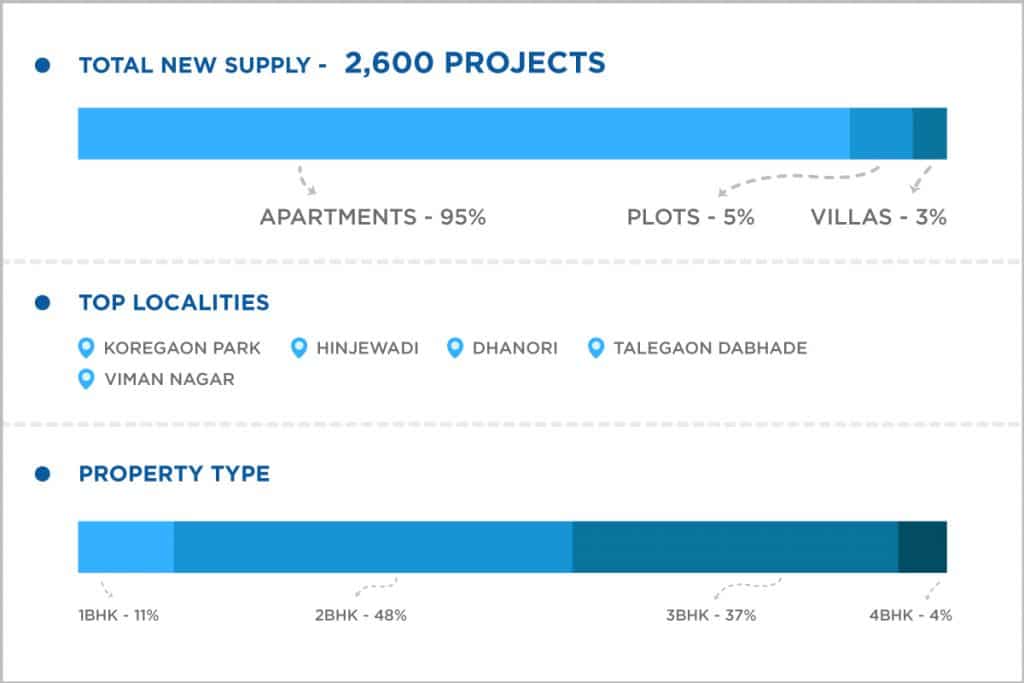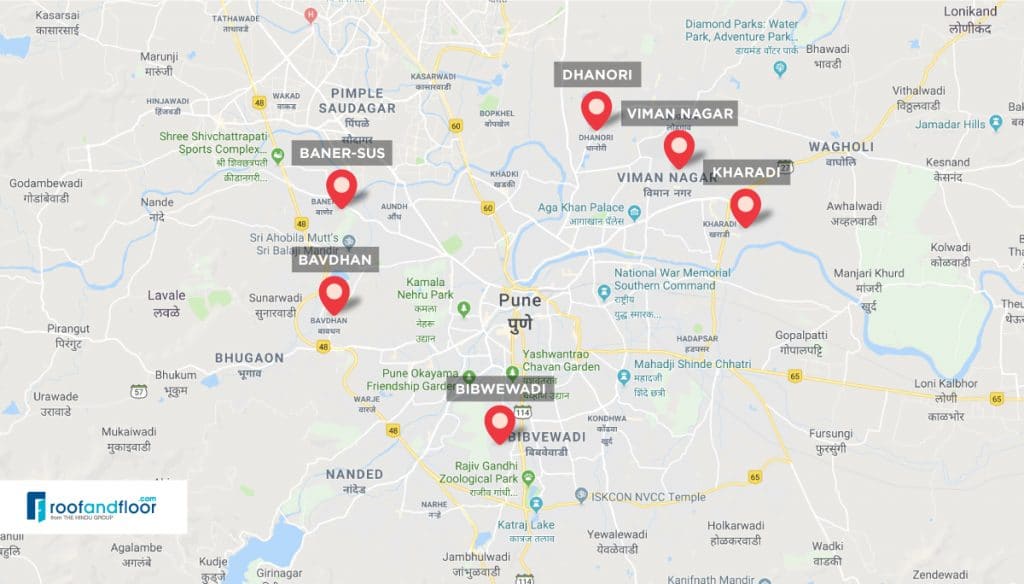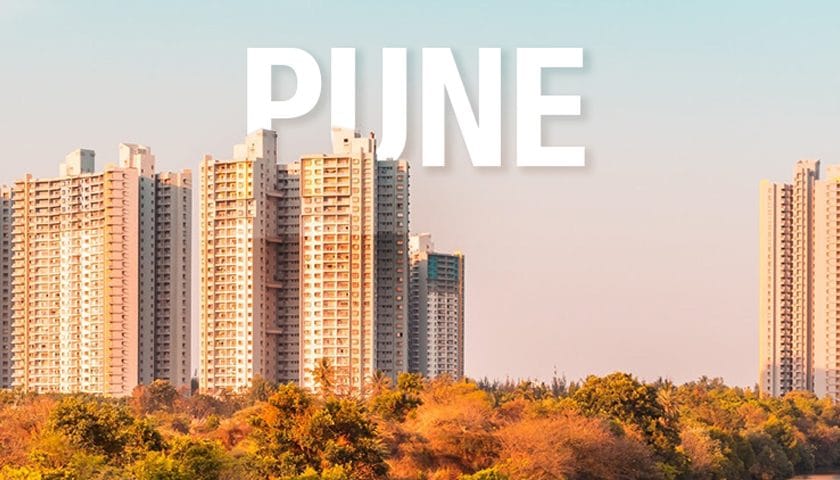As the year winds down, the real estate sector in Pune has reasons to celebrate as it saw an increase in both sales and new launches this year! 2018 was the year that brought more clarity and confidence for customers than several preceding decades put together. The inherent strength of reputed developers became more evident this year, with many of the smaller developers selling their unfinished projects or land holdings to established ones.
“There was also a lot of ready-to-move-in supply, which gave customers not only a way around GST but also the comfort of knowing exactly what they are paying for,” says Anil Pharande, Chairman of Pharande Spaces.
So, how was the year 2018 for Pune? RoofandFloor research reveals that over 2,600 projects were launched in 2018. About 53% of this new supply was in the affordable segment (less than Rs 40 Lakh), followed by 28% in the mid-segment (Rs 40- 70 Lakh) and 19% supply in the luxury segment (Rs 70 Lakh and above).

This data was also validated by the Knight Frank Affordability Index, a measure of how expensive the housing market is. In Pune, the Index was well within the comfort level of the benchmark. Experts believe that affordable housing will witness positive movement in 2019 as well.
Chakan, Chikhali, Pimpri Chinchwad, Talegaon, and Wagholi recorded maximum new supply in the affordable segment in 2018.
Regarding BHK configurations, 2BHK apartments ruled the roost with 48% supply, followed by 1BHK and 3BHK apartments with 37% and 11%, respectively.
Breaking the demand locality-wise, Gunjan Goel, Director, Media and Marketing Communications, Goel Ganga Developments explains, “In Baner and Dhanori, 2BHK apartments saw maximum demand whereas in Kharadi, and Bimbewadi 3BHKs were in demand.”
Pune scores high on liveability
As per Ease of Living Index 2018 released by the Ministry of Housing and Urban Affairs, out of the 11 cities surveyed, Pune emerged as the most liveable city India. The Index takes into account economic factors, physical infrastructure, social infrastructure, and institutions and governance.
Infrastructure projects gain momentum
Pune Metro
Pune Metro has three lines with a total length of 54.58km. The first two lines are expected to be operational by 2021. For the third line, construction is scheduled to begin by June 2019. The State Government has also categorised the third phase of the Pune Metro, running between Hinjewadi and Shivajinagar, as a vital project. This status means a faster release of land, finance, and other required assistance.
- Line 1: This 16.59km line will run from PCMC Building to Swargate
- Line 2: This 14.66km line will run from Vanaz to Ramwadi
- Line 3: This 23.33km line will run from the Rajiv Gandhi Infotech Park in Hinjewadi via Balewadi to Shivajinagar.
BRTS
The much-awaited Nigdi-Dapodi Bus Rapid Transport Service (BRTS) began operations in August 2018. The work on the BRTS line had started in 2013, and it took about five years to operationalise it. Also, after a five-year delay, the Bombay High Court finally gave a green signal to the Dapodi-Nigdi BRTS project.
IT Park
The Pune Municipal Corporation (PMC) also approved a plan to create new IT parks in Aundh, Baner, Balewadi, and Kharadi. This project is expected to generate approximately 1 Lakh sq. ft. of IT space in the city. According to reports, nearly 60 Lakh sq. ft. construction is expected in Kharadi and around 40 Lakh sq. ft. in Aundh, Baner, and Balewadi.

Kharadi, Dhanori, Bibwewadi, Baner-Sus, Bavdhan, and Viman Nagar are micro-markets that will see new supply in 2019. Most of these markets are self-sufficient with robust social and physical infrastructure in place.

Trends that will define Pune real estate in 2019
NRIs to drive realty growth in Pune
“After the implementation of economic and regulatory reforms like GST and RERA, there has been a marked upsurge in NRI investments in Pune, especially in the residential sector,” informs Gunjan.

India’s real estate sector has always received a steady and significant investment from NRI investors.
NRI investors increasingly prefer Pune because of the city’s growing cosmopolitan culture, IT hubs, educational institutions, and great weather all year round.
This trend is likely to continue in 2019 as well. It will also be a big year for FDI investments.
Consolidation on the cards
With the implementation of RERA, several smaller developers exited the market or consolidated with larger players. Under the RERA regime, the number of pre-launch projects also reduced in Pune. “The previous dynamics that defined the Indian real estate industry – opacity, financial indiscipline, inadequate redressal mechanism, and false commitments – are on their way out. Massive consolidation is very much on the agenda for the next year,” says Anuj Puri, Chairman, ANAROCK Property Consultants.
The year began on a good note for Pune’s residential market, both on the demand and supply sides. After the slowdown of 2017, sales velocity saw a steady rise on the back of strong growth in mid-income and affordable housing. This is likely to continue in 2019. Affordable housing, logistics, and warehousing are expected to be the growth drivers. Given the higher degree of transparency, the city will also see an increase in private equity investments. Overall, the future is bound to become brighter for Pune’s realty sector in 2019.


Rightly said.
But maybe because I am reading this article in the month of November, I guess the year is summing up to a huge pile of unsold inventory in the affordable segment.
To find a way around GST (supposedly a boon to a real estate sector), most buyers are preferring the ready or nearing possession properties. There are apparently some new launches by big players from Mumbai and Bangalore lined up to explore the Pune market but it will take an another year to make developers’ order books heavy.
Nice article on Realty Markets in Pune… Even though this article published in 2018, but it is still applicable for the latest Realty Market trends in 2021.